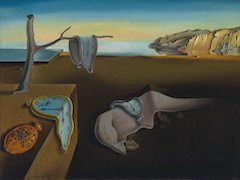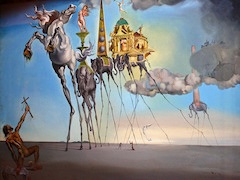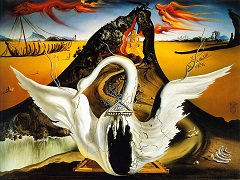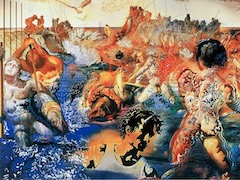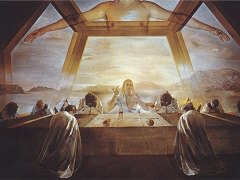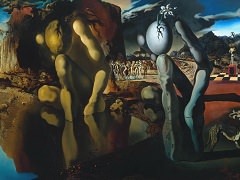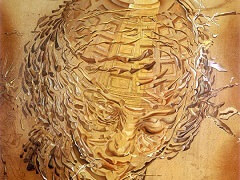Anthropomorphic Echo, 1937 by Salvador Dali

Anthropomorphic Echo implicates the occluded subject of desire in the landscape of Dali's youth. From his classroom window at the Marist Brothers' School, Dali could see the belfry of the Romanesque church of Saint Mary of Vilabertran a short distance from Figueres. Dali's reminiscence of the belfry is in turn conflated with memories of the bell tower of the school his sister attended. The form of the bell is strategically repeated in that of a bishop holding his crozier in the center foreground, and in the image of a girl holding aloft a jump rope in the far right foreground.
By duplicating-echoing-formal elements, Dali establishes a series of unlikely analogies that transform the landscape into the site of an erotic encounter. In addition to the bishop and the young girl, the protagonists of Dali's dreamscape include St. George and the dragon - a nostalgic reference, perhaps, to the patron saint of Catalonia - the artist's childhood nurse, seated with her back turned to the viewer, and two enigmatic figures standing at the far left: a female muse pointing toward the action on the plain below, and a troll-like male figure dressed in a fancy costume that distantly echoes that worn by Johannes Vermeer in The Art of Painting of 1666.

